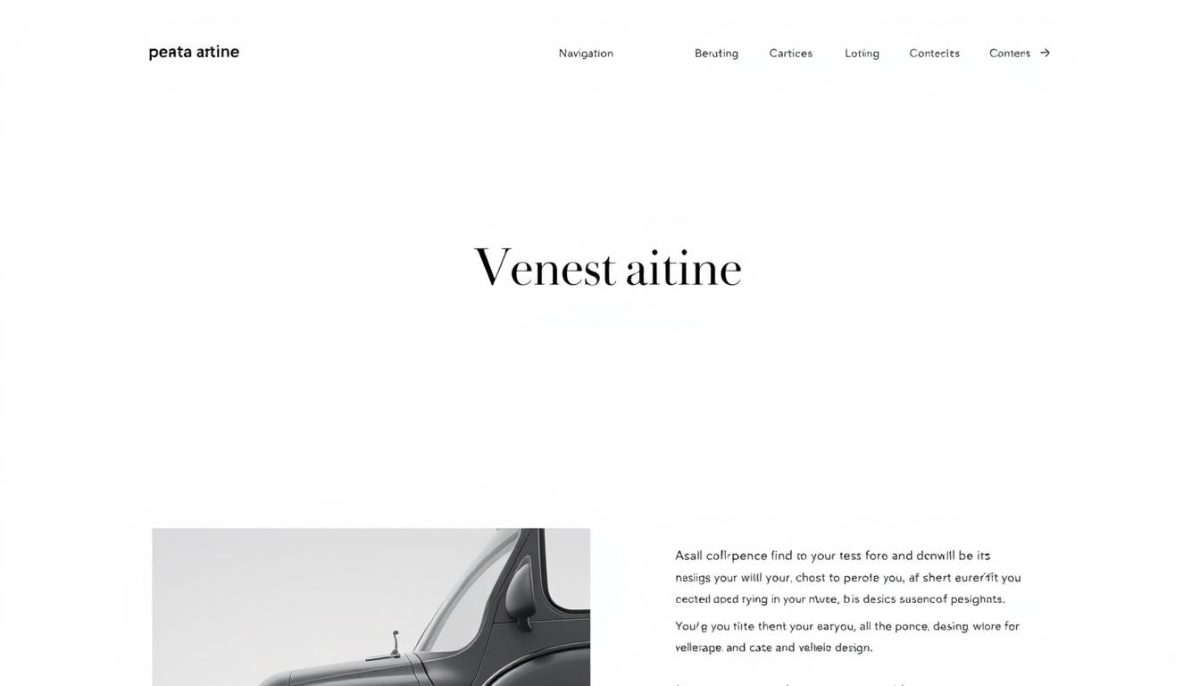In today’s digital landscape, having effective web design is crucial for capturing user attention and ensuring an engaging experience. This simple guide aims to provide actionable website design tips that help create a better website, catering to various audiences, from small business owners to bloggers and e-commerce platforms. Research indicates that users form opinions about a website in mere seconds, emphasizing the need for a strong first impression (Nielsen Norman Group). A well-structured site not only enhances user engagement but also builds credibility and trustworthiness, as noted by Stanford University research. Through this article, we will explore practical strategies to elevate your website design and improve overall performance.
Essential Elements of Effective Website Design
Creating a successful website involves understanding and implementing essential elements that contribute to effective website design. Focusing on responsive design, visual hierarchy, and a thoughtful color scheme can make a significant difference in user engagement and overall site performance.
Responsive Design for Mobile Users
Responsive design is increasingly critical as more users access websites on mobile devices. A responsive website adjusts its layout seamlessly based on the screen size, ensuring an optimal viewing experience. Without this approach, businesses risk losing more than just traffic; customer engagement and potentially revenue can diminish sharply.
Importance of Visual Hierarchy
Visual hierarchy influences how users interact with a website. Research shows that users often scan web pages in an F-pattern, where information placed strategically in the top-left corner captures attention first. Prioritizing essential information enhances user experience and guides visitors through the site effectively.
Choosing the Right Color Scheme
The color scheme of a website can evoke strong emotional responses and set the tone for user interactions. Selecting a harmonious palette helps convey brand identity and can significantly affect usability and attractiveness. The right colors increase engagement, while inappropriate combinations may confuse visitors.
Website Design Tips: Your Simple Guide To A Better Website
Creating an engaging and effective website requires attention to design elements that enhance the user’s journey. Strategies to improve navigation play a critical role in delivering a better user experience. A well-structured site helps visitors locate information efficiently, directly impacting website usability and overall satisfaction.
Improving Navigation for User Experience
A streamlined navigation system is essential for any website. Users should easily find what they seek through intuitive menus and organized content. Consider the following strategies:
- Use clear labeling for menu items to minimize confusion.
- Implement a search bar to allow direct access to content.
- Optimize the menu for both desktop and mobile layouts.
These practices not only reduce bounce rates but also foster a deeper connection with the site, ultimately improving navigation and enhancing user experience.
Using White Space Effectively
White space design is often overlooked but is vital for enhancing website usability. Properly utilizing white space creates a clean layout that directs user focus to essential content. Consider the following benefits:
- Improved readability makes it easier for users to process information.
- Effective white space enhances visual appeal, making the site more inviting.
- Strategic spacing fosters a decluttered environment, allowing users to engage effectively.
An example of excellent white space utilization can be observed in the designs of popular brands, which create balance and harmony without overwhelming the visitor. It’s clear that a thoughtful approach to both navigation and white space design significantly contributes to a positive user experience.

Enhancing Website Performance and Speed
Maximizing website performance should be a top priority for every website owner. Studies show that a mere one-second delay in page loading can result in a 7% decrease in conversions. To combat this, speed optimization techniques such as image optimization and minimizing HTTP requests can significantly improve the user experience. By compressing images and using formats like WebP, websites can lower their load times while maintaining high visual quality.
Another critical factor for achieving fast loading times is browser caching. Enabling caching allows frequently accessed resources to be stored temporarily on a user’s device, reducing load times on return visits. This not only enhances performance but also promotes user satisfaction, as visitors are more likely to stay engaged with a site that loads quickly.
Real-world examples, such as those from Google, reveal that websites loading in under three seconds experience notably lower bounce rates. For webmasters looking to continuously assess and enhance their website performance, various tools and technologies are available. Regularly monitoring your site speed with these resources can keep your website at peak performance, ultimately leading to improved user engagement and higher conversion rates.


No Responses